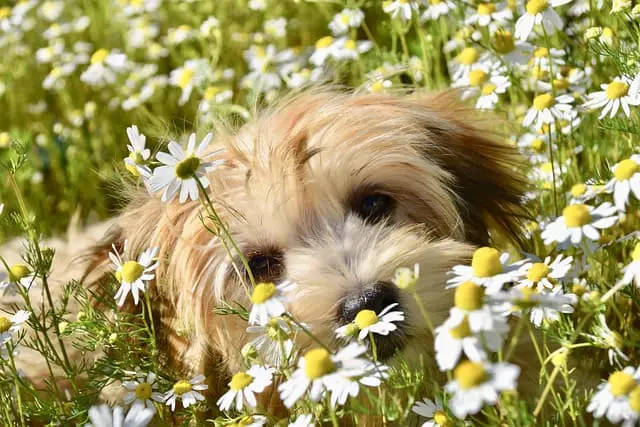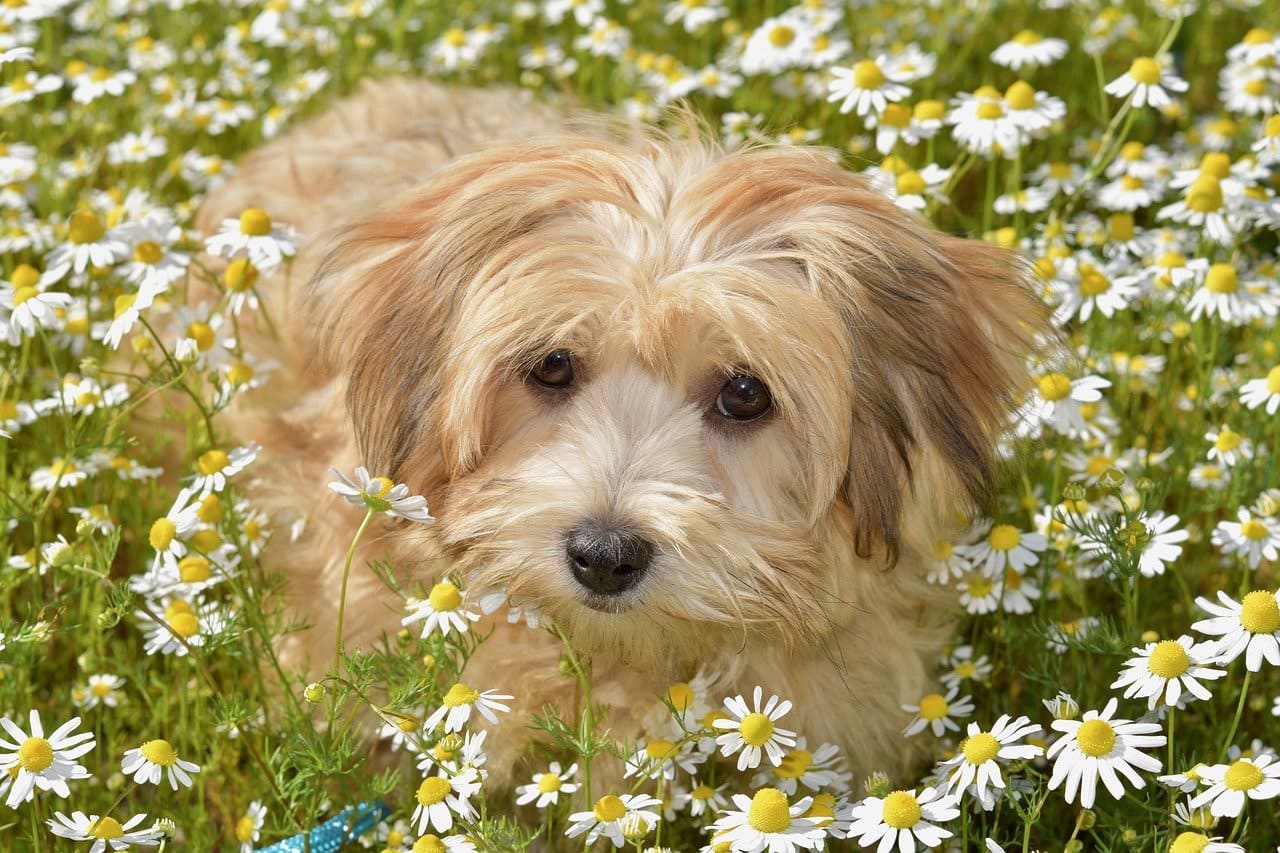The Havanese, a charming and lively toy breed, is known for its affectionate nature and distinctive appearance. This breed has a rich history, hailing from the sunny shores of Cuba and carries with it a legacy of companionship, intelligence, and adaptability. In this comprehensive guide, we’ll delve into the world of Havanese dogs, exploring their history, characteristics, temperament, grooming needs, and more.
History of the Havanese

The Havanese is often referred to as the “Bichon Havanais” or “Havana Silk Dog.” Its roots can be traced back to Havana, Cuba, making it one of the oldest toy breeds in the world. The Havanese is a direct descendant of the Mediterranean Bichon family, which includes the Maltese, Bichon Frise, and Bolognese.
The breed’s history is intertwined with the colonial period of Cuba. As Spanish settlers arrived on the island, they brought small dogs with them, and these dogs eventually interbred with the local Cuban dog population. The result was a charming, small breed known for its silky coat and friendly disposition.
Havanese dogs quickly became popular among Cuban aristocrats and the upper class. They were cherished for their elegant appearance and gentle temperament. They often served as companions to Cuban nobility and were even seen in the company of Spanish nobles during visits to the island.
However, in the 19th century, as Cuba underwent a period of political upheaval and revolution, many of the wealthy Cubans fled the country, often taking their beloved Havanese dogs with them. This diaspora played a crucial role in preserving the breed during challenging times.
The Havanese made their way to the United States in the 1950s, thanks to Cuban immigrants who brought their cherished pets with them. These early Havanese dogs served as the foundation for the breed’s development in the United States. In 1979, the Havanese Club of America was founded, and the breed gained recognition by the American Kennel Club (AKC) in 1996.
Physical Characteristics
The Havanese is a small, sturdy, and well-balanced toy breed with distinctive physical characteristics that set it apart from other breeds. Let’s take a closer look at the typical physical traits of the Havanese dog:
Size: Havanese dogs are small but not delicate. They usually weigh between 7 to 13 pounds (3 to 6 kilograms). Their height at the shoulder typically ranges from 8.5 to 11.5 inches (21.5 to 29 cm).
Coat: The Havanese coat is one of its most notable features. It’s long, silky, and profuse, flowing gracefully down their back. The coat can come in a wide variety of colors, including white, cream, fawn, black, silver, and various combinations of these. The coat is often wavy, giving the Havanese a charming and slightly tousled appearance.
Head: Havanese dogs have a rounded skull and a moderately short, square muzzle. Their expressive, dark eyes are set relatively far apart, and their medium-sized ears hang down, framing the face.
Tail: The Havanese tail is plumed and arched gracefully over the back. When the dog is relaxed, the tail is often carried high, but it may drop down when they are active.
Legs and Body: This breed has a slightly longer than tall body with a well-arched neck and a straight topline. Their legs are straight, and their paws are small and oval-shaped.
Expression: Havanese dogs have an expressive and alert face. Their dark, almond-shaped eyes and black nose give them a lively, inquisitive expression that reflects their intelligence and curious nature.
Temperament and Personality
The Havanese is celebrated for its warm and affectionate nature. Their friendly temperament makes them excellent companions for families, singles, and seniors alike. Here are some key aspects of the Havanese’s temperament and personality:
1. Affectionate: Havanese dogs are known for their deep affection for their human family members. They thrive on human interaction and love being involved in all family activities. They are often referred to as “Velcro dogs” because they like to stick close to their owners.
2. Intelligent: These dogs are highly intelligent and are quick learners. They excel in obedience training and often enjoy performing tricks. Their intelligence, combined with a desire to please, makes them a great choice for canine activities like agility and obedience.
3. Playful: Havanese dogs have a playful and mischievous side. They enjoy interactive playtime and are known for their entertaining antics. Their playful nature makes them great companions for children and adults.
4. Alert: Despite their small size, Havanese dogs are alert watchdogs. They will alert their owners to the presence of strangers or any unusual activity. While they are not aggressive, their bark serves as an effective warning signal.
5. Sociable: These dogs are generally sociable with other dogs and pets, and they tend to get along well with other animals in the household.
6. Adaptability: The Havanese is a highly adaptable breed. They can live happily in a small apartment or a larger house, as long as they receive the attention and exercise they need. They can adapt to different living situations and are equally comfortable in urban and rural settings.
7. Separation Anxiety: Havanese dogs form strong bonds with their owners and can experience separation anxiety if left alone for extended periods. Proper training and gradual introductions to being alone can help alleviate this issue.
8. Gentle and Patient: These dogs are known for their gentleness, which makes them well-suited for families with children. They are patient and tolerant, making them an excellent choice for families with kids of all ages.
Grooming and Maintenance
The Havanese’s long, silky coat requires regular grooming and maintenance. Here are some tips for keeping your Havanese looking and feeling their best:
1. Brushing: Daily brushing is recommended to prevent mats and tangles in the Havanese’s long coat. Use a pin brush or slicker brush to gently work through the fur. Be sure to pay extra attention to areas prone to matting, such as behind the ears and in the armpits.
2. Bathing: Havanese dogs should be bathed every 2 to 4 weeks to keep their coat clean and in good condition. Use a mild dog shampoo, and be sure to thoroughly rinse the coat to remove all soap residue.
3. Haircuts: Many Havanese owners choose to keep their dog’s coat trimmed short for easier maintenance. Professional grooming is an option, or you can learn to trim your Havanese’s coat yourself.
4. Ear Care: Check your Havanese’s ears regularly for signs of infection or debris buildup. Clean their ears as needed with a damp cotton ball or a canine ear cleaning solution, but be gentle to avoid causing any damage.
5. Dental Care: Brush your Havanese’s teeth regularly to maintain good oral health. Dental issues can be common in small breeds, so preventative care is essential.
6. Nail Trimming: Regular nail trimming is necessary to keep your Havanese’s paws healthy and to prevent overgrowth.
7. Eye Care: Havanese dogs are prone to tear staining, which can be managed with regular cleaning. Use a damp cloth or a tear stain remover to gently clean the area around their eyes.
8. Regular Vet Check-Ups: Schedule regular vet check-ups to monitor your Havanese’s overall health and address any specific breed-related concerns.
Exercise Needs

Havanese dogs are active and playful, and they require regular exercise to keep them happy and healthy. Here are some exercise recommendations for this breed:
1. Daily Walks: Taking your Havanese for a daily walk is essential. Aim for at least 30 minutes to an hour of walking, divided into two or more sessions. Their small size means they don’t need strenuous exercise, but they do need to burn off some energy.
2. Playtime: Havanese dogs love interactive playtime. Games of fetch, tug-of-war, and hide-and-seek can help keep them physically and mentally stimulated.
3. Mental Stimulation: These dogs are highly intelligent, so engage their minds with puzzle toys, obedience training, and trick training. Mental stimulation is just as important as physical exercise.
4. Socialization: Make sure your Havanese has the opportunity to socialize with other dogs and people. Socialization is important for their development and helps prevent shyness or fearfulness.
Common Health Issues
While Havanese dogs are generally healthy, like all breeds, they can be prone to specific health issues. Some common health concerns for Havanese dogs include:
1. Progressive Retinal Atrophy (PRA): PRA is a genetic condition that can lead to gradual blindness in Havanese dogs. Responsible breeders test for this condition to reduce its occurrence in the breed.
2. Hip Dysplasia: Hip dysplasia is a hereditary condition where the hip joint doesn’t fit properly into the hip socket, potentially leading to arthritis and mobility issues.
3. Heart Conditions: Havanese dogs can be prone to heart conditions, including mitral valve disease. Regular veterinary check-ups are important to monitor heart health.
4. Patellar Luxation: This condition involves the kneecap slipping out of place, causing lameness and discomfort.
5. Legg-Calve-Perthes Disease: This condition affects the hip joint and can result in pain and lameness.
6. Chondrodysplasia: A genetic condition that affects cartilage development and can lead to short limbs.
7. Allergies: Some Havanese dogs may develop skin allergies, which can be triggered by various environmental factors and food.
8. Dental Issues: Small breeds like the Havanese are prone to dental problems, so dental care is essential.
It’s important to work with a responsible breeder who conducts health tests on their breeding dogs to reduce the risk of these genetic conditions. Regular veterinary care and a healthy lifestyle can also help manage and prevent some of these health issues.
Feeding Guidelines
Proper nutrition is crucial for the health and well-being of your Havanese. Here are some feeding guidelines to keep in mind:
1. Quality Dog Food: Choose a high-quality dog food that meets the nutritional needs of small breed dogs. Look for options with a balance of protein, fat, and carbohydrates.
2. Portion Control: Be mindful of portion sizes to prevent overfeeding, which can lead to obesity. Follow the feeding guidelines on the dog food packaging and adjust based on your Havanese’s age, activity level, and individual needs.
3. Fresh Water: Always provide your Havanese with fresh, clean water.
4. Avoid Table Scraps: While it’s tempting to share human food with your dog, avoid giving them table scraps, as many human foods can be harmful to dogs.
5. Special Diets: If your Havanese has specific dietary needs or allergies, work with your veterinarian to choose an appropriate diet.
6. Puppies and Seniors: Puppies and senior dogs may have different dietary requirements. Consult with your veterinarian to ensure you’re providing the right nutrition for your dog’s life stage.
7. Dental Health: Consider dental health when selecting your dog’s food. Some kibbles are designed to help clean teeth, which can be beneficial for small breeds prone to dental issues.
Training and Socialization
Havanese dogs are highly trainable, thanks to their intelligence and eagerness to please. Proper training and socialization are crucial to ensure a well-behaved and well-adjusted Havanese. Here are some tips for training and socializing your Havanese:
1. Obedience Training: Begin basic obedience training early, including commands like sit, stay, come, and down. Positive reinforcement techniques work well with Havanese dogs.
2. Housebreaking: Housebreaking your Havanese may take some time and patience, as they can be slow to house train. Consistency and positive reinforcement are key.
3. Socialization: Expose your Havanese to a variety of people, animals, and situations from a young age. This helps them develop confidence and reduces the risk of fear or aggression toward strangers or other dogs.
4. Crate Training: Crate training can be helpful for housetraining and providing a safe space for your Havanese. Ensure the crate is a positive and comfortable place for them.
5. Clicker Training: Clicker training can be effective for teaching tricks and commands. The distinct sound of the clicker helps your Havanese understand when they’ve done something correctly.
6. Be Patient: Havanese dogs respond well to positive reinforcement, so be patient and use rewards like treats, praise, and play to motivate them during training.
7. Consistency: Consistency is key to effective training. Ensure that all family members use the same commands and follow the same training rules.
8. Professional Training: If you’re having trouble with training, consider enrolling your Havanese in a basic obedience class or working with a professional dog trainer.
Havanese as Family Pets
Havanese dogs make excellent family pets for a wide range of households. Here are some reasons why they are a great choice for families:
1. Affectionate and Loving: Havanese dogs form strong bonds with their human family members and provide love and companionship.
2. Good with Children: Their gentle and patient nature makes them well-suited for families with children of all ages.
3. Playful and Fun: Havanese dogs are known for their playful and entertaining personalities, which bring joy to the household.
4. Adaptability: They can adapt to different living situations and are equally comfortable in urban and rural settings.
5. Low Shedding: Havanese dogs are considered hypoallergenic, as they shed very little. This can be a great choice for families with allergies.
6. Small Size: Their small size makes them suitable for apartment living and easy to transport.
7. Alertness: Havanese dogs are good watchdogs and will alert their owners to any unusual activity or visitors.
8. Longevity: The Havanese is known for its relatively long lifespan, often living into their teenage years.
While Havanese dogs make wonderful family pets, it’s important to remember that they do require daily exercise, grooming, and socialization to thrive in a family environment.
Finding a Havanese Puppy
If you’re considering adding a Havanese puppy to your family, it’s crucial to find a reputable breeder. Here are some steps to help you find a healthy and well-bred Havanese puppy:
1. Research Breeders: Start by researching Havanese breeders in your area. Look for breeders who are members of the Havanese Club of America or other reputable breed clubs.
2. Visit the Breeder: Schedule a visit to the breeder’s facility to meet the puppies and their parents. This is an opportunity to assess the living conditions and ensure the dogs are well cared for.
3. Ask Questions: Don’t be afraid to ask the breeder questions about their breeding program, health testing, and the puppy’s upbringing. A responsible breeder will be happy to provide you with all the necessary information.
4. Health Testing: Inquire about health testing for the puppy’s parents. Responsible breeders screen for genetic conditions to reduce the risk of passing them on to the puppies.
5. Puppy’s Environment: Assess the environment where the puppies are raised. It should be clean and well-maintained, and the puppies should be well-socialized.
6. Contracts and Guarantees: Review any contracts or guarantees offered by the breeder. These should outline the breeder’s responsibilities and your obligations as a puppy owner.
7. Avoid Puppy Mills: Do not purchase a Havanese puppy from a puppy mill or pet store, as these sources often prioritize profit over the welfare of the dogs.
8. Referrals: Seek referrals from Havanese owners or breed clubs to find reputable breeders.
9. Take Your Time: Finding the right breeder may take some time, but it’s worth the effort to ensure you bring home a healthy and well-adjusted puppy.
Remember that adopting a puppy is a long-term commitment, and it’s essential to choose a breeder who prioritizes the health and well-being of the dogs. Be prepared for the responsibilities of puppy ownership, including training, grooming, and healthcare.
Rescue and Adoption

If you’re open to adopting a Havanese, consider checking with Havanese rescue organizations and animal shelters. Many wonderful dogs are in need of loving homes. Here are some tips for adopting a Havanese:
1. Havanese Rescues: Look for Havanese-specific rescue organizations in your area. They often have Havanese dogs available for adoption.
2. Animal Shelters: Visit local animal shelters and inquire about Havanese dogs that may be available for adoption.
3. Online Resources: You can also find Havanese dogs available for adoption on various online platforms and websites dedicated to pet adoption.
4. Patience: Be patient during your search. It may take some time to find the right Havanese for your family.
5. Consider All Ages: Havanese rescues may have dogs of various ages, so be open to adopting a puppy, adult, or senior dog.
Adopting a Havanese can be a rewarding experience, and it provides a loving home to a dog in need. Many rescue dogs are well-adjusted and make wonderful companions.
Conclusion
The Havanese is a delightful and charming breed that offers a combination of affection, intelligence, and adaptability. Whether you’re a single person, a family with children, or a senior looking for a loyal companion, the Havanese can be an excellent choice. They thrive on human interaction, making them an ideal pet for those who are ready to provide the love, care, and attention they deserve.
Before bringing a Havanese into your home, it’s essential to do your research, choose a responsible breeder or consider adoption, and be prepared for the grooming and exercise needs of the breed. With proper care, training, and socialization, your Havanese can become a cherished member of your family, bringing joy and love for years to come.
